Most of us expect, under normal circumstances, cemeteries to be peaceful and tranquil places. After all, they are the eternal resting places of our loved ones, and an everlasting peace is the very thing we want for them.
At the end, “the only people without problems are those in cemeteries,” or so we believe and wish to be the case, for death is universal. In a way, this offers some kind of comfort at least, for one way or another almost all of us end up buried underground.
Well, almost all of us, as there are those who have the means to arrange to be placed inside expensive mausoleums above the ground. Many have done it thinking it is the best way to preserve a body as well as the spirit, and there were ancient cultures truly devoted to this belief. In truth, preservation is not possible, it’s not an option but a false doctrine sold as scientific nonsense that only delays the inevitable chemical decomposition, sometimes with horrendous repercussions.
“Show me the manner in which a nation cares for its dead, and I will measure with mathematical exactness the tender mercies of its people, their respect for laws of the land and their loyalty to high ideals” – William Gladstone.
That said, the Aztecs, no matter how advanced they were, had a way of throwing the unwanted and sacrificed into a pit to rot slowly under the sun while the others were buried carelessly under their own house. And the English of the 19th century don’t have a great deal to brag about when it comes to caring for the dead either. Especially at the turn of the century, when the death count was far greater than the ground could handle; church graveyards were filled completely and coffins were stacked one over the other in 20-feet-deep holes, with the top one almost peeking through the ground. Bodies inside were often times cut into pieces to make space for new arrivals, and what couldn’t fit back inside was scattered around by gravediggers.
“I saw them chopping the head of his coffin away; I should not have known it if I had not seen the head with the teeth; I knew him by his teeth; one tooth was knocked out and the other was splintered; I knew it was my father’s head, and I told them to stop, and they laughed…“ – Campbell’s Foreign Semi-Monthly Magazine, or Select Miscellany of European Literature and Art, Volume 4 (1843).
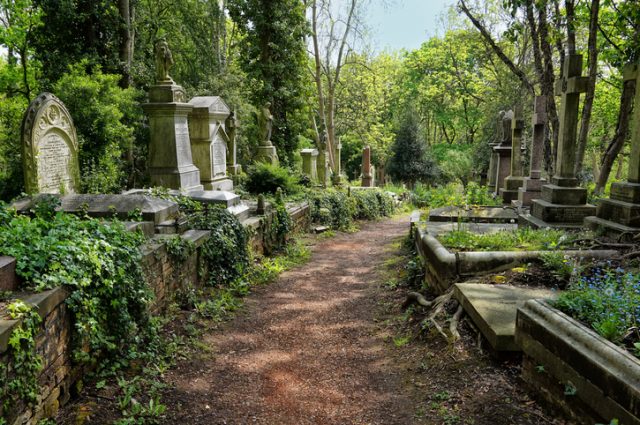
Grim were the streets in England, especially in the City of London, which in the 1830s decided that something had to be done.
And what city officials did was pass a law according to which private investors would have the right to finance one of the “magnificent seven” garden-like cemeteries to be built around London. Naturally, as a business investment, the investors had the right to sell the burial plots to those who could pay the price for a proper and decent funeral. An exclusive privilege reserved only for the royals, the aristocrats, and the celebs, unfortunately.
In no more than a decade, these profitable “garden cemeteries” of the rich were fully formed in the semi-rural suburbs of London. One of them, perched on a hill in the northern part of the city, was the Highgate Cemetery. Designed by Stephen Geary, David Ramsey, and James Bunstone Bunning, it was supposed to be the capital’s main burial ground when it officially opened on May 26, 1839.
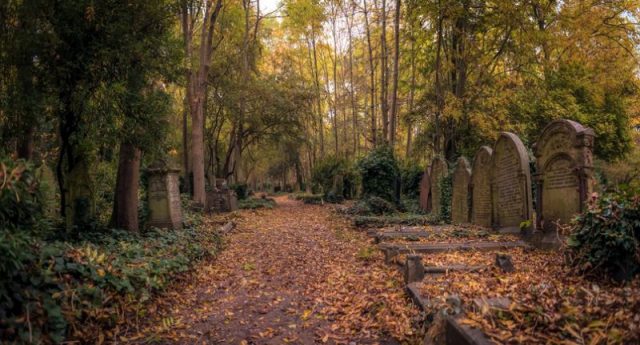
The esteemed Victorian Londoners were obsessed with ancient Egypt and its culture at the time, probably due to their fascination with what was seized during the Napoleonic wars in Egypt and Syria (1798–1801). They were captivated by Egyptology and these newly found discoveries. This translated to their interments and nowhere in the world is this more evident than at the exquisite Egyptian Avenue at Highgate Cemetery, where the catacombs were built precisely for those who wished to be entombed above ground just as Egyptians were, thousands of years ago.
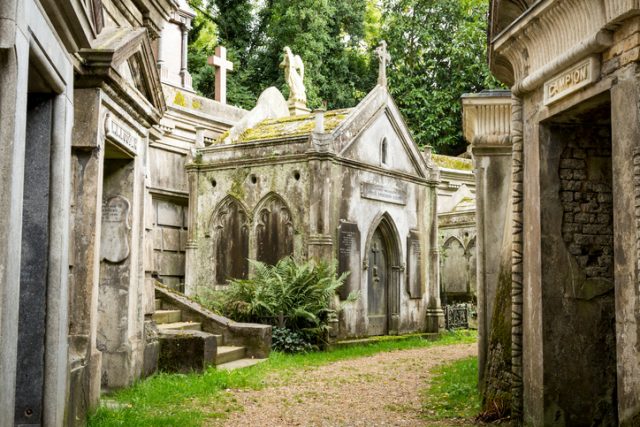
The avenue was designed by the man in charge, Stephen Geary, who envisioned the whole cemetery. After all this time it still stands preserved, just as impressive as it was back then, as the most striking feature of Highgate.
Visitors are awed at the sight of the magnificent gateway to the Egyptian Avenue that leads right into the Street of the Dead, a shady alleyway of 16 family vaults that looks like a street of terraced houses, covered by moss and a green canopy of leafy branches. Each vault, brick-lined, has shelf room for 12 coffins and is the eternal resting place for those special few among the 160,000 buried in Highgate. It’s a home they now share with Bob, the rare giant spider who was found living in total darkness inside the catacombs along with his large family.
But Bob has a story of its own and has nothing to do with the manner in which the wealthiest of the wealthy chose to be buried in the 1850s.
The law clearly instructed that every above-ground burial was supposed to be fully sealed and enclosed in lead, in order to stop potential foul-smelling and poisonous gases from leaking out. And therein was the problem.
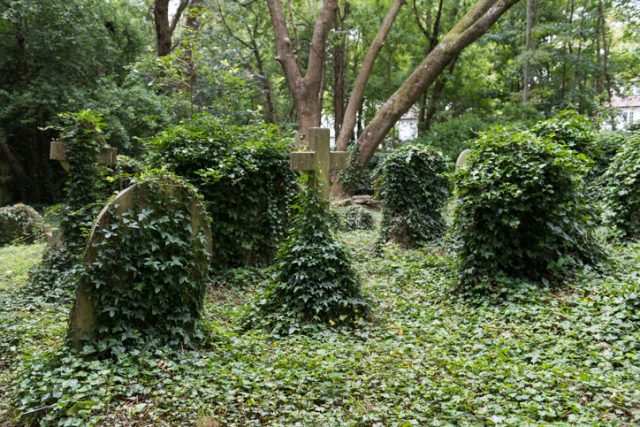
With time, a build-up of putrid gasses as the body decomposes gradually fills the coffin, and the sealed casket becomes literally a pressure cooker. As Josh Slocum, the executive director of the Funeral Consumers Alliance explains: “When you seal up a body in an environment that locks up heat and humidity, anaerobic bacteria take over. You’re gonna rot regardless, it doesn’t matter if you’re sealed or not. But the problem is how unpleasant the consequences can be when you seal it up and you deprive the body of air circulation and dehydration.”
Without an adequate way for the gas to exit, the caskets in the magnificent Egyptian Avenue occasionally burped under pressure and, in some extreme cases, even exploded. You can imagine the surprise of the occasional visitor who would found himself a witness to these “explosive burps.” Or of the average gravedigger who on arriving at work expects to find everything as it was when he left his shift the previous day, and not vaults that appear to be opened from the inside.
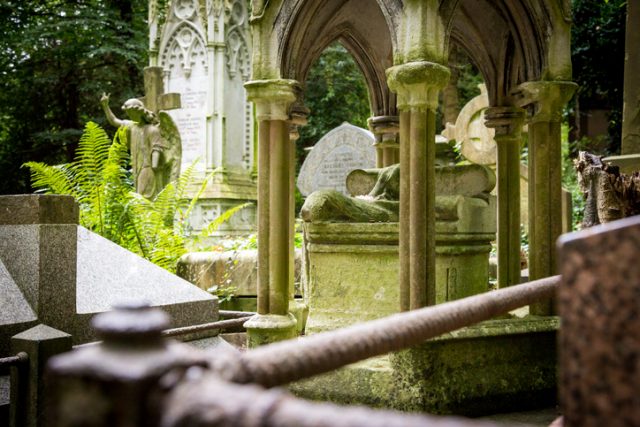
At first, it was believed to be the work of grave-robbers, but then it was confirmed that fully sealed caskets encourage the decaying corpses to explode now and then. It seems the problem was fixed by drilling small holes in the coffins into which small pipes were placed, and the toxic gas was “hygienically” lit by a match as it exited through the pipe. It was a process that took three weeks at most and was repeated occasionally and created more work and responsibility for mausoleum workers, but it sure beat the random cleaning after a corpse had exploded.
Related story from us: The Lizzie Borden case: Interest surges again in the shocking 1892 axe murder
Today mausoleums are built with efficient drainage systems and workers can be seen strangely tapping the coffins in the church vaults to depressurize the caskets and prevent them from breaking open. But this still doesn’t prevent them from burping occasionally.
There is a fast-growing appreciation over the past couple of decades for an interesting idea proposed by two Italian designers, Francesco D’Angelo and Adriano Del Ferro, where, in scarcity of land for burial grounds, human remains could be placed into biodegradable Capsula Mundi (world’s capsule” in Latin). An egg-shaped, organic casket “through which a corpse or ashes buried inside will provide nutrients to a tree planted above it.”
“The best way is to allow your body to feed the earth or ocean in a way that is sustainable for future generations,” writes Susan Dobscha, a marketing professor at Bentley University and editor of Death and a Consumer Culture, an interesting book about a future with eco-friendly trends in the funeral industry. So instead of looking at the past and copying long-lost civilizations, this might be something the world could look into and leave poor old Bob alone at last.
